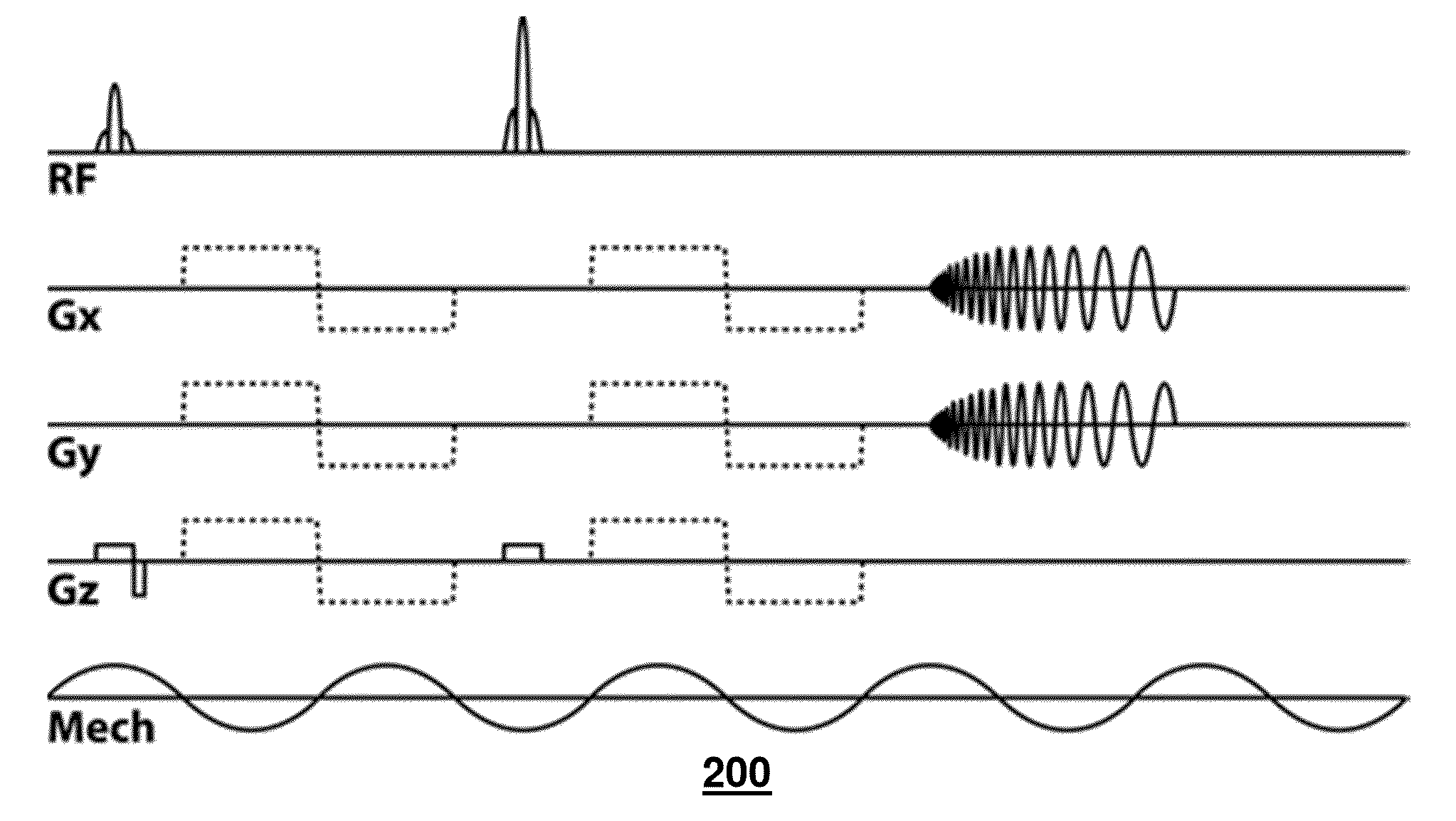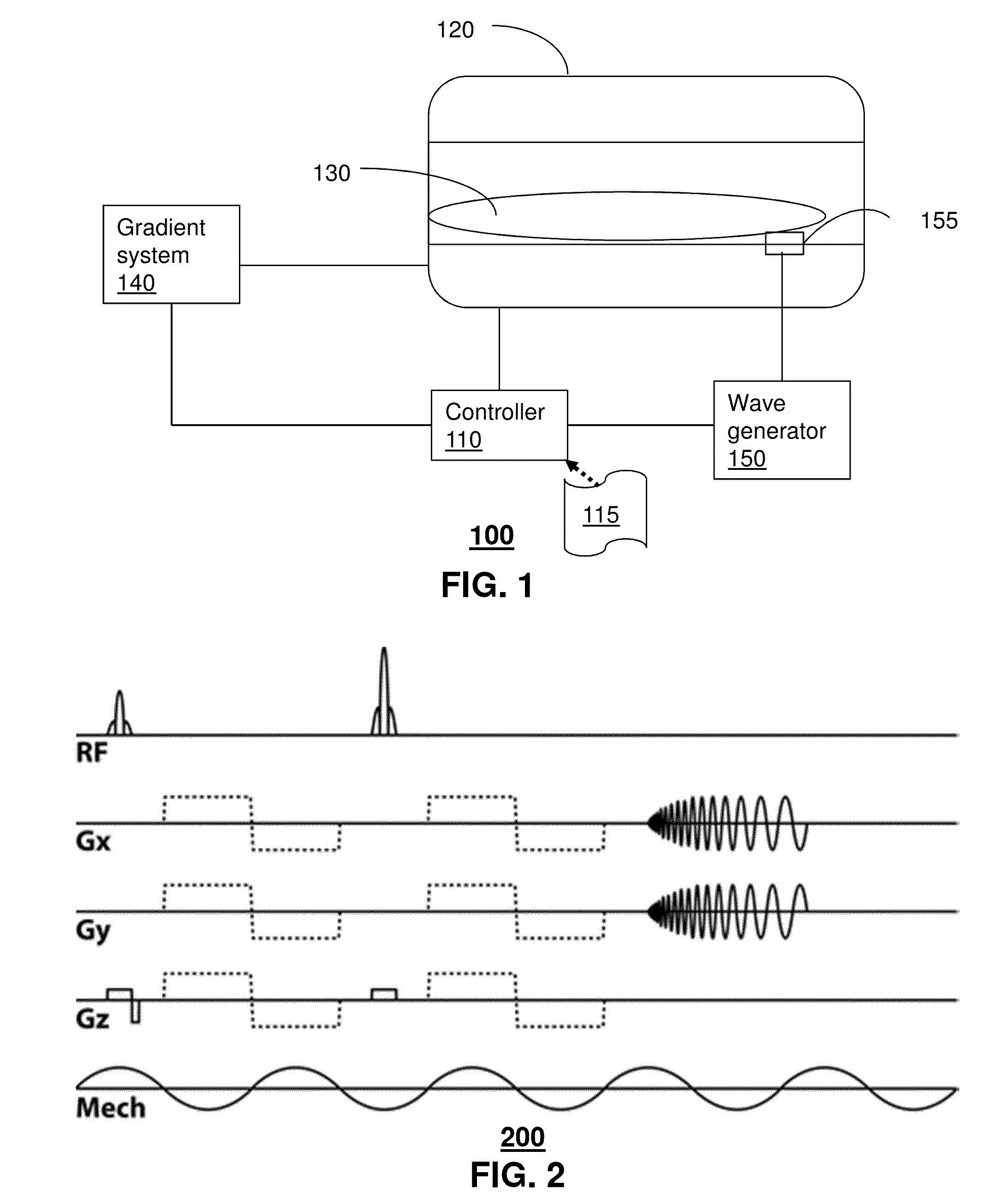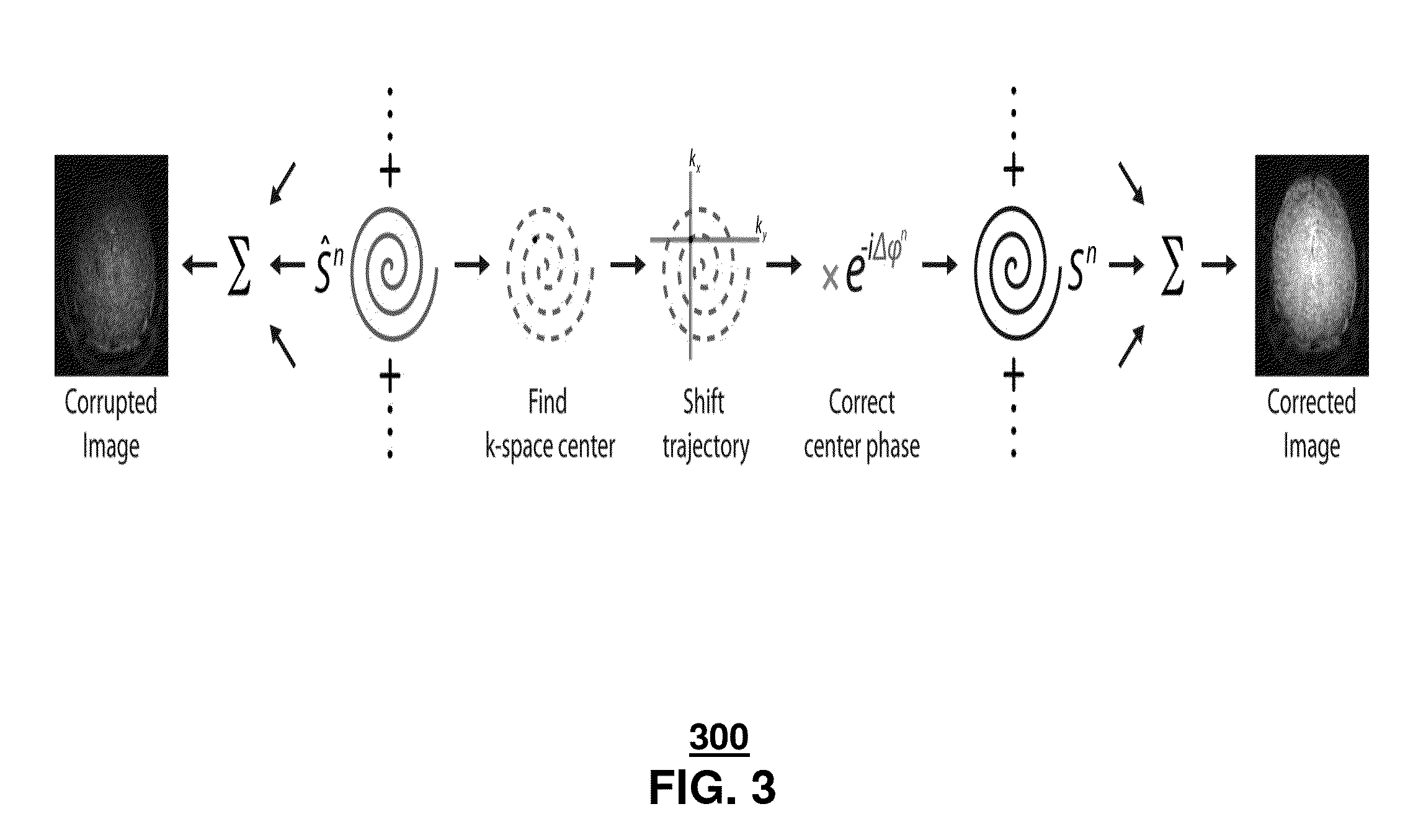Method and system for multi-shot spiral magnetic resonance elastography pulse sequence
a magnetic resonance elastography and pulse sequence technology, applied in the field of multi-shot spiral magnetic resonance elastography pulse sequence, can solve the problems of not being able to achieve the quality of mre property distribution, not all types of mr techniques are suitable for every purpose, and not being able to accurately achieve the effect of mr property distribution,
- Summary
- Abstract
- Description
- Claims
- Application Information
AI Technical Summary
Benefits of technology
Problems solved by technology
Method used
Image
Examples
example 1
[0048]The phantom used in the experiments was a rectangular parallelepiped composed of agarose gel (1%) with three stiffer inclusions (2%) embedded. The inclusions were cubes of three different sizes: 10, 15, and 20 mm on a side. Shear waves were generated by vibrating the lower surface of the phantom at 100 Hz.
[0049]Images were acquired using a multi-shot spiral MRE sequence with bipolar motion-encoding gradients matched in period to the vibration frequency of 100 Hz, as described above with respect to system 100. MRE encoding was performed on each of the three cardinal gradient directions independently, and a single period of vibration was sampled with eight evenly spaced points. Six interleaved spiral shots were used to cover k-space with a 64×64 matrix size for the phantom, with resolution achieved by adjusting the overall field-of-view: 128, 192, and 256 mm Twenty slices were acquired with 2, 3, or 4 mm thickness, corresponding to the in-plane resolution resulting in isotropic ...
example 2
[0053]In vivo brain tissue examination was performed utilizing an exemplary embodiment of the present disclosure. Actuation during the brain MRE study was performed with a system that comprised a remote electromagnetic shaker having a long rod that vibrates a custom cradle the subject's head rests on, similar to the one used in other brain MRE studies. (See Sack et al. Non-Invasive Measurement of Brain Viscoelasticity Using Magnetic Resonance Elastography. NMR Biomed 2008; 21:265-271, the disclosure of which is hereby incorporated by reference). The actuator imparted a nodding motion to the head at the driving frequency of 50 Hz. Imaging was performed in the same manner as the phantom study with motion encoding along three axes and eight samples over a single period. Imaging parameters included: six k-space interleaves; 256 mm field-of-view; 128×128 matrix; 20 axial slices (2 mm thick) in the region of the corpus callosum; 2000 / 55 ms repetition / echo times. This acquisition resulted ...
PUM
 Login to View More
Login to View More Abstract
Description
Claims
Application Information
 Login to View More
Login to View More - R&D
- Intellectual Property
- Life Sciences
- Materials
- Tech Scout
- Unparalleled Data Quality
- Higher Quality Content
- 60% Fewer Hallucinations
Browse by: Latest US Patents, China's latest patents, Technical Efficacy Thesaurus, Application Domain, Technology Topic, Popular Technical Reports.
© 2025 PatSnap. All rights reserved.Legal|Privacy policy|Modern Slavery Act Transparency Statement|Sitemap|About US| Contact US: help@patsnap.com



